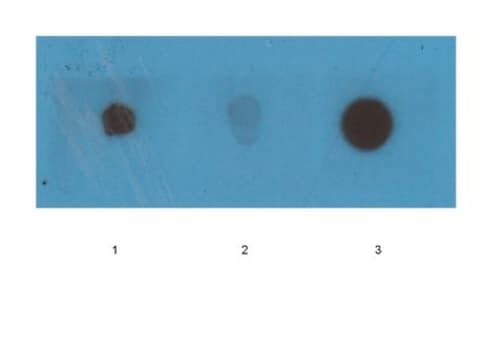一般說明
Myelin proteolipid protein (UniProt: P04116; also known as PLP, DM20, Lipophilin) is encoded by the PLP1 (also known as PLP) gene (Gene ID: 281410) in bovine. Myelin proteolipid protein is a highly conserved, multi-pass membrane protein with three cytoplasmic domains, four transmembrane domains, and two extracellular domains. It is composed of a series of alternating hydrophobic and hydrophilic domains. It is the major myelin protein from the central nervous system and plays an important role in the formation or maintenance of the multilamellar structure of myelin. It is shown to be the most abundant protein of the central nervous system (CNS) myelin sheath with a relative abundance of about 17% of the myelin proteins. It is mainly expressed by myelin forming oligodendrocytes in the CNS and Schwann cells in the peripheral nervous system. PLP1 gene is reported to encode two isoforms; a 30 kDa PLP and a 25 kDa DM20 that has a deletion of 35 amino acids in the second cytoplasmic domain. The DM20 protein is expressed prior to PLP during development and as development proceeds PLP becomes the more predominant protein. Although the molecular mass of PLP is ~ 30 kDa, it migrates anomalously on SDS gels and gives a lower apparent molecular mass. (Ref.: LeVine, SM., et al. (1990). Dev. Neurosci. 12(4-5); 235-250; Yamamura, T., et al. (1991). J. Neurochem. 57(5); 1671-1680; Sarret, C., et al. (2010). Neuroscience. 166(2); 522-538).
特異性
Clone AA3 is a rat monoclonal antibody that detects Myelin proteolipid protein. It targets an epitope within 13 amino acids from the C-terminal region. It detects both isoforms of Myelin proteolipid protein.
免疫原
Purified Myelin proteolipid protein from bovine brain.
應用
Quality Control Testing
Evaluated by Western Blotting in SH-SY5Y cell lysate.
Western Blotting Analysis: A 1:1,000 dilution of this antibody detected Myelin Proteolipid Protein in SH-SY5Y cell lysate.
Tested Applications
Western Blotting Analysis: A 1:1,000 dilution from a representative lot detected Myelin Proteolipid Protein in HepG2 cell lysate.
Immunohistochemistry (Paraffin) Analysis: A 1:50 dilution from a representative lot detected Myelin Proteolipid Protein in human cerebral cortex and human cerebellum tissue sections.
Immunoprecipitation Analysis: A representative lot immunoprecipitated Myelin Proteolipid Protein in Immunoprecipitation applications (Gudz, T.I., et. al. (2006). J Neurosci. 26(9):2458-66).
ELISA Analysis: A representative lot detected Myelin Proteolipid Protein in ELISA applications (Yamamura, T., et. al. (1991). J Neurochem. 57(5):1671-80).
Immunohistochemistry Applications: A representative lot detected Myelin Proteolipid Protein in Immunohistochemistry applications ( Gudz, T.I., et. al. (2006). J Neurosci. 26(9):2458-66; Sarret, C., et. al. (2010). Neuroscience. 166(2):522-38).
Western Blotting Analysis: A representative lot detected Myelin Proteolipid Protein in Western Blotting applications (Zhu, H., et. al. (2012). Glia. 60(1):69-82).
Immunocytochemistry Analysis: A representative lot detected Myelin Proteolipid Protein in Immunocytochemistry applications (Sarret, C., et. al. (2010). Neuroscience. 166(2):522-38).
Note: Actual optimal working dilutions must be determined by end user as specimens, and experimental conditions may vary with the end user
Anti-Myelin Proteolipid Protein, clone AA3, Cat. No. MABN2620, is a rat monoclonal antibody that detects Myelin proteolipid protein and is tested for use in ELISA, Immunocytochemistry, Immunohistochemistry (Paraffin), Immunoprecipitation, and Western Blot
外觀
Purified rat monoclonal antibody IgG2b in buffer containing 0.1 M Tris-Glycine (pH 7.4), 150 mM NaCl with 0.05% sodium azide.
儲存和穩定性
Stable for 1 year at +2°C to +8°C from date of receipt.
其他說明
Concentration: Please refer to the Certificate of Analysis for the lot-specific concentration.
免責聲明
Unless otherwise stated in our catalog or other company documentation accompanying the product(s), our products are intended for research use only and are not to be used for any other purpose, which includes but is not limited to, unauthorized commercial uses, in vitro diagnostic uses, ex vivo or in vivo therapeutic uses or any type of consumption or application to humans or animals.








